Industry vets Tom Branighan and Molly Wismeier team up to create a warm, bustling brasserie where a delectable menu and a stellar staff lead to delighted diners – and rave reviews.
The low-slung, terracotta building on the corner of St. Phillip and Rampart doesn’t appear remarkable. A green and white awning bursting with colorful flowers shades the entrance, and a wrought-iron sign with sinuous letters spelling “MaMou” swings above. It’s just another restaurant in a city filled with spectacular restaurants.
Stepping inside reveals a cozy dining room, bistro chairs flutter around small tables cluttering the wood floor, and a wide banquette beckons on the opposite wall, waving like hot pink lady-fingers.
Painted ribbons frame window pane mirrors and wildflower bouquets are suspended from the ceiling, hanging in intentional disarray. It feels like a subdued snippet from an Art Nouveau painting. While the décor is reminiscent of a fine Parisian café, it’s not the only thing that sets this restaurant apart.
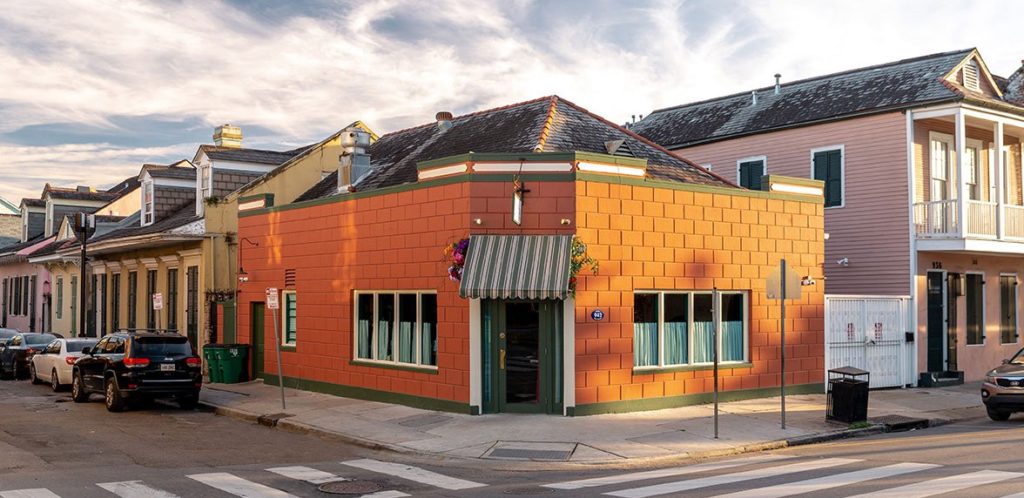
A little over a year ago, chef Tom Branighan and sommelier Molly Wismeier opened MaMou, touting it as a modern French brasserie. Their vision? A French-inspired neighborhood restaurant with the air of “a great dinner party.”
As is evidenced by glowing reviews and write-ups in prestigious national publications such as the New York Times and Bon Appetit, it’s clear they’ve achieved what they set out to do –and then some. But what’s their secret? What makes MaMou a restaurant everyone raves about, especially in a city where there’s so much foodie ado?

Branighan is a born and bred New Orleanian who grew up in Bayou St. John and was bitten by the food bug early in life. Tom’s mother worked late, so his father would pick him up after school. “I would sit at the dining room table and he had to watch me do my homework, or else I just wouldn’t do it!” laughs Branighan. With one eye on Tom, his father would make dinner, cooking from River Road Recipes (a spiral-bound Louisiana tome created by the Junior League of Baton Rouge) and Chef Paul Prudhomme’s Louisiana Kitchen.
While attending high school at Brother Martin, Tom took a summer job bussing tables at Vega Tapas Cafe, a now-closed, Spanish small plates restaurant made famous by local chef Alison Vega-Knoll. The short gig piqued his interest, and Tom began cooking and experimenting at home in his free time, but he hadn’t considered a career in the kitchen until after he started attending LSU. “My dad is an electrical contractor, so I was studying construction management, and I just hated it,” admits Branighan.
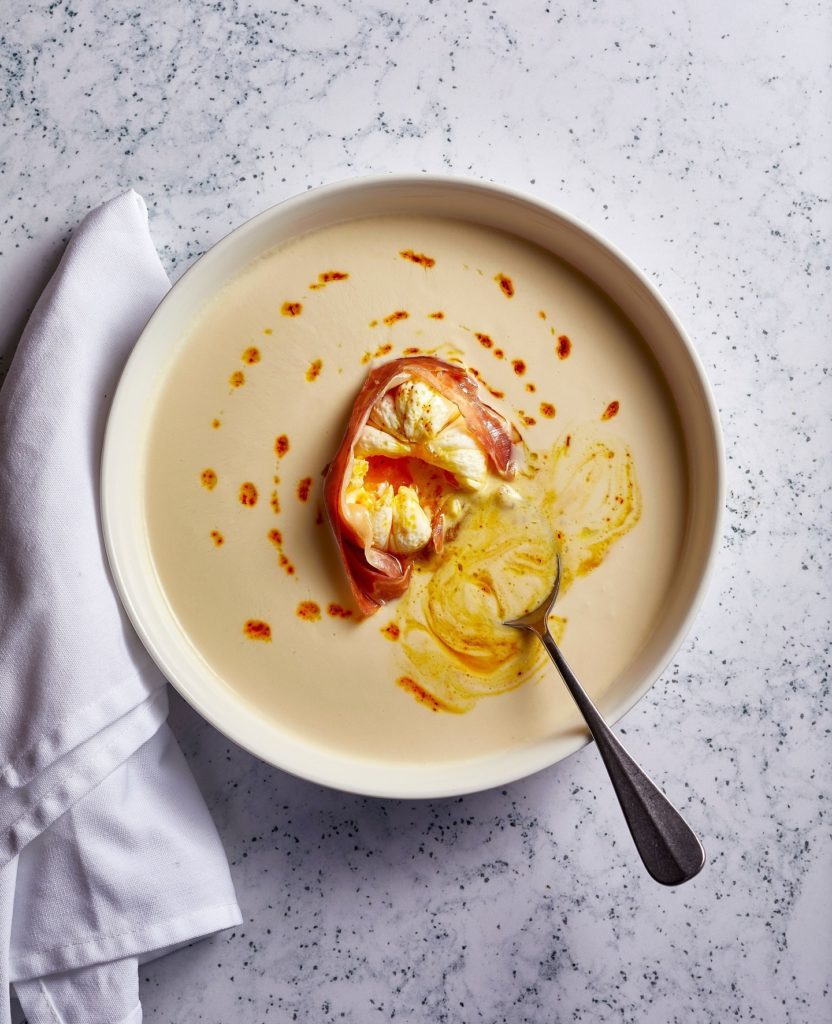
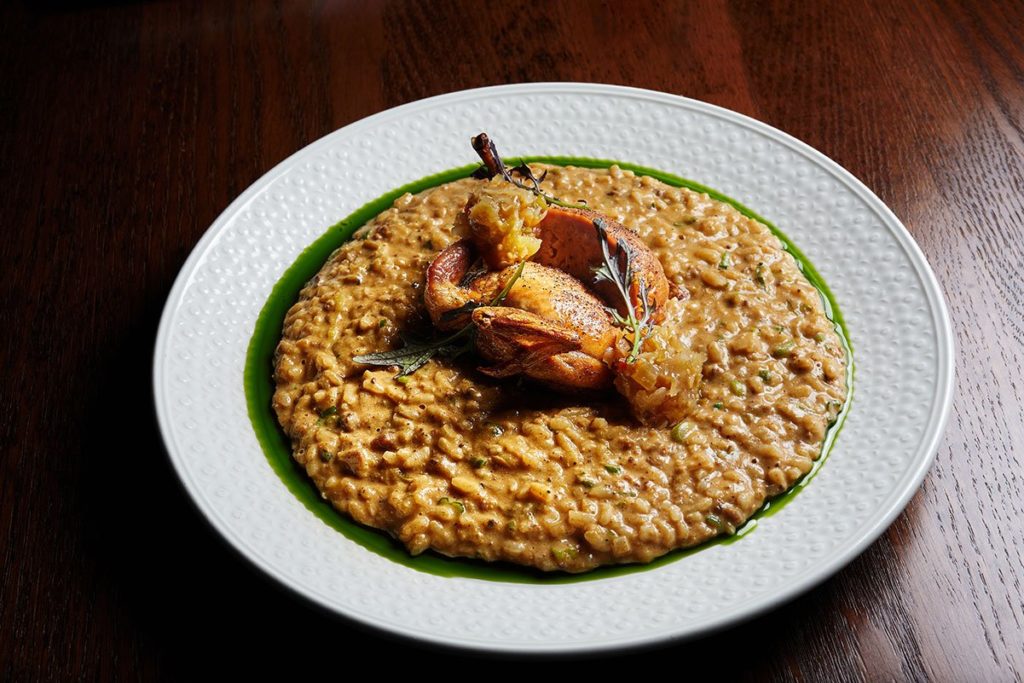
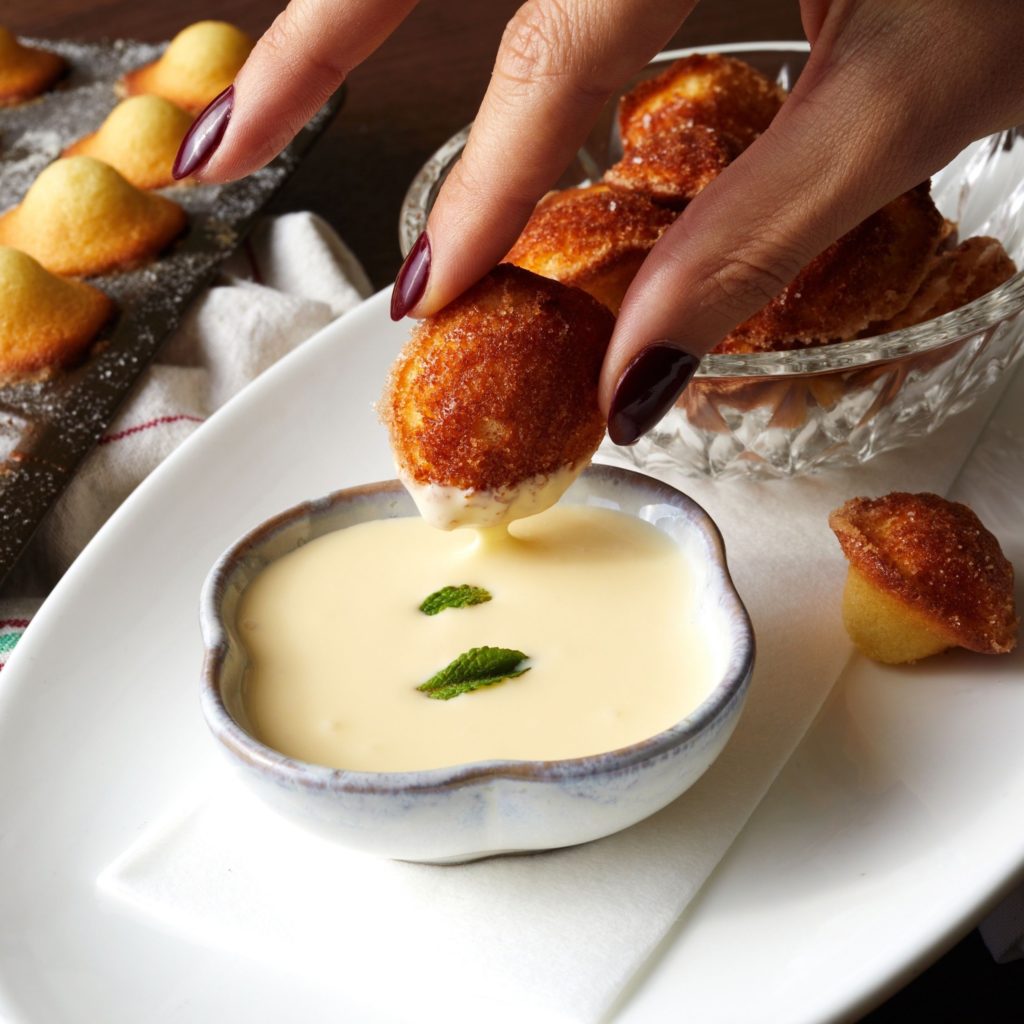
Lamenting his college career path, a friend suggested he try cooking, but at first, Tom was skeptical. “I had this image in my mind, the sweaty diner-owner motif. I was also 18, what did I even know at that time?” laughs Branighan.
“After researching it more, I realized it was an actual profession. That was always something my dad beat into my head, being a professional, a tradesman.” After discussing his new career plans with his parents, Tom and his mother traveled to New York for a tour of the Culinary Institute of America.
Plans were in place to attend the CIA, but in the meantime, Tom started started looking for a job. While nosing around a career fair at the Alario Center, he met Chef Christopher Lynch, then the chef de cuisine at Emeril’s.
“Luckily for me, Katrina happened the year before so Emeril’s was desperate,” joked Branighan. Lynch took a chance on the aspiring chef and hired him on as a prep cook. After a short while in the kitchen at Emeril’s, Tom went to the CIA for two years and returned to stage at Stella!, Chef Scott Boswell’s fine dining restaurant on Chartres Street.
Later, Branighan moved back to New York to work at David Bouley’s eponymous restaurant in Tribeca. Bouley was a Michelin-starred chef, notoriously difficult to work for and ever-present in his kitchens. Half of Tom’s time working there was spent on the line right next to Bouley.
“I cried a lot, but I learned a lot,” admits Tom. “He’s a hard guy to work for, but I’m grateful for my time there.” Using vegetable water as stock, the way flavors should meld together, and how they’re developed and created – all are techniques he absorbed while under Bouley’s discerning eye.
Working at Bouley, and in other prominent kitchens such as Cafe Boulud in New York and Lacroix in Philadelphia, Branighan came back home to New Orleans with a dark impression of what it meant to be a great chef. “You know, the Marco Pier White-type, romanticizing that idea of being difficult or hard to work for, being a jerk to people.”
While cooking at Petit Lion, a bistro launched by Chef Philip Lopez inside The Troubadour Hotel, Branighan tried on the iconic fractious chef persona, but it didn’t fit. “The more I thought about it, the more I found myself looking inward. Did I want to be that person?”
When one door closes, a window opens, to paraphrase Rodgers and Hammerstein’s immortal Maria. Before leaving Petit Lion, Tom was also afforded a new opportunity. To impress local food celebrity Poppy Tooker, he made a roasted pork chop with sauerkraut, and came out to pour the accompanying Sauce Robert table-side. That window opened when Tom met Poppy’s dining companion, and the woman who would become his future business partner, Molly Wismeier.
A seasoned sommelier, Molly Wismeier is well-versed in the language of wine, but her career trajectory didn’t begin on the vine. Raised in Iowa, Wismeier studied Russian language and literature until a gig as a nanny in New York opened up a whole new world. “They [Jim and Sherrie Starr] had wine every night with dinner,” says Wismeier. “They taught me so much.”
The Starr’s oenophilia infected Wismeier, and she dove into the vat feet-first with on-the-job training in several Chicago area restaurants including Cru, Ambria, mk The Restaurant, and Charlie Trotter’s. “I got to work with a bunch of talented sommeliers that really set me up,” she explains.
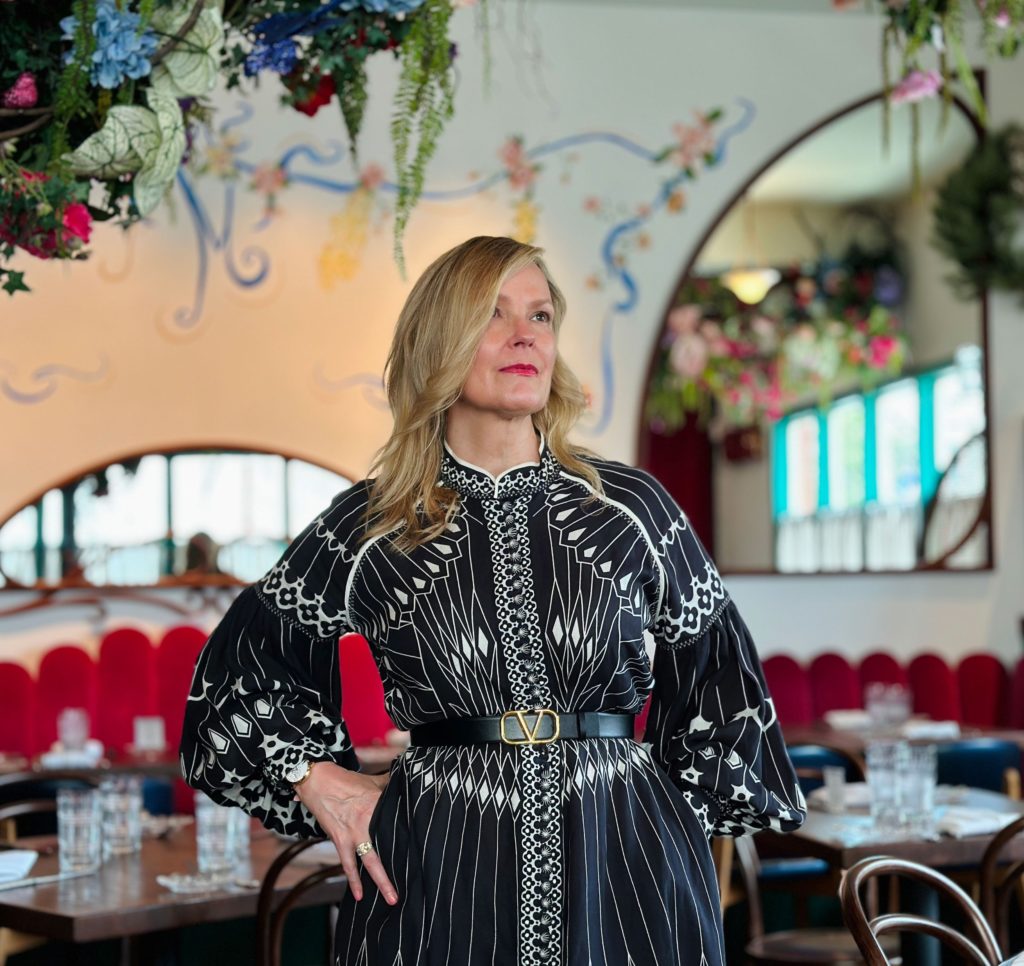
In 2011, Wismeier came down to New Orleans to help chefs John Folse and Rick Tramanto launch Restaurant R’evolution, the high-end Bienville Street eatery inside the Royal Sonesta Hotel. Over the next several years, Molly was key in curating R’evolution’s bar program, including their wildly impressive cellar featuring 10,000 bottles from wineries all over the globe.
Wismeier learned a lot from working in white-tablecloth, high-volume restaurants and groups – the hard way. Owners and chefs would settle for nothing less than the best, demanding expertise at every level and from everyone on her team.
“Charlie Trotter used to say ‘the guest will never know more than you, you need to make sure you and your team always know more,’” says Wismeier. To her, that meant endless hours of training, study and practice, but under a constant threat. “I was guided out of fear of making mistakes, of getting fired.”
When Molly and Tom began planning MaMou, they decided to change the tone of their new restaurant from the start. Instead of setting their sights on being the best and winning awards, the duo aimed for a more home-grown experience. “We wanted it to feel like a great dinner party,” says Wismeier.
If you’ve ever hosted your own dinner party, you know (or quickly realized) there are several important elements required for success. Tangibles like great food, libations and an inviting space are a given, but what about the intangibles such as camaraderie, and calm, gracious hosts?
By giving their team the tools and knowledge they need as professionals, and to act graciously to co-workers and guests, Molly and Tom have created a more optimistic work environment.
“We know we’re going to make mistakes, but the focus is how do we deal with them when they happen,” says Wismeier. “We’re not going to blame people. It’s not the end of the world.”
“You assume people [coming in to dine] are going to have a good time and you treat them as guests coming into your home,” says Wismeier.
“It just works.”
*Article originally published May 2024 in the French Quarter Journal
**Lead image by Ellis Anderson



